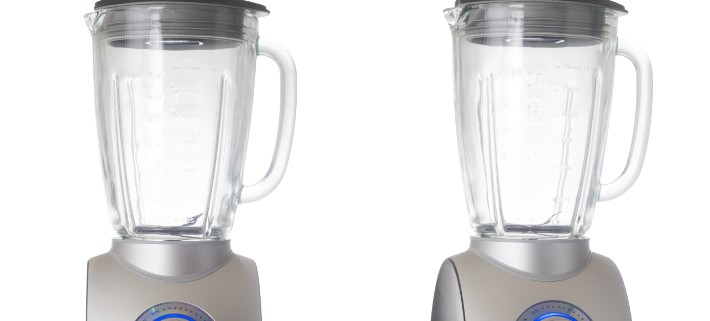Travel Nursing Pay Package Comparison Strategy: Part 2
In Part 1 of this series we discussed the importance of viewing the travel nursing pay package as a pie and determining the total number of hours in the contract being examined. The next step is to determine the dollar values of each piece of the pie.
Obtain similar quotes from each agency
To do this, you must take control of the conversation by utilizing the checklist that we discussed in our blog post titled “Finding Travel Nursing Agencies – A Time-Saving Strategy.” Essentially, you’re going to have a list of all the pay package variables you desire and you’re going to ask each agency to provide you with values for each variable on your list. That way, there are no surprises, everyone is on the same page, there’s no room for sales gimmicks, and you’ll save a ton of time. For example, let’s say you decide on the following items:
1) Taxable Base Rate (This should always be part of the pay package.)
2) Taxable Overtime Rate (This should always be part of the pay package.)
3) Lodging Stipend (instead of company provided lodging)
4) Meals and Incidental Expense Stipend
6) License Reimbursement of $250 for new state license
Now let’s say you the follow our previous advice to determine which agency will represent you at a given facility by asking several agencies to submit a travel nursing pay package to you for that given facility. It doesn’t matter if there is an open job at that particular facility or not, you’re simply making a determination as to who will represent you if and when an open job should arise.
For example, let’s say you’re interested in going to Bakersfield, California because you’ve heard there are a lot of assignments in that city and you want to be sure you’re ready with a backup plan if your first choice falls through. Remember to be very specific and ask the same exact questions of all the agencies you speak with. For example:
“Can you please provide me with a written pay package quote via email for Bakersfield Memorial? I’m interested in a 13 week contract for 36 hours per week and I’d like the following items as part of my compensation package: Taxable Base Rate, Taxable Overtime Rate, Lodging Stipend (instead of company provided lodging), Meals and Incidental Expense Stipend, Travel Stipend, and License Reimbursement of $250 for new state license. Also, please include your overtime pay rules for this contract.”
The last request in this statement, the one regarding overtime pay rules, is very important. I’ve found that different companies have different policies even though state laws on the subject are very clear. Some companies simply don’t abide by state laws, or claim that they have developed some mechanism for circumventing state laws. In addition, because every state has different overtime pay laws, there is not one standard method for payment. You shouldn’t have to become an expert on overtime laws in all 50 states. You should however know how the agency will pay the overtime rate because it can make a significant difference in your pay.
Now let’s say you speak with three different agencies and you get the following three responses regarding your desired pay variables:
Agency 1’s pay offer:
1) Taxable Base Rate: $20/hour
2) Taxable Overtime Rate: $30/hour
3) Lodging Stipend (instead of company provided lodging): $2800/month
4) Meals and Incidental Expense Stipend: $350/week
5) Travel Stipend: $700
6) License Reimbursement of $250 for new state license: $250
7) Overtime is paid after 8 regular hours in a day and 40 regular hours in a week.
Agency 2’s pay offer:
1) Taxable Base Rate: $30/hour
2) Taxable Overtime Rate: $45/hour
3) Lodging Stipend (instead of company provided lodging): $1500/month
4) Meals and Incidental Expense Stipend: $250/week
5) Travel Stipend: $500
6) License Reimbursement of $250 for new state license: $250
7) Overtime is paid after 8 regular hours in a day and 40 regular hours in a week.
Agency 3’s pay offer:
1) Taxable Base Rate: $24/hour
2) Taxable Overtime Rate: $36/hour
3) Lodging Stipend (instead of company provided lodging): $16/hour
4) Meals and Incidental Expense Stipend: $8/hour
5) Travel Stipend: $800
6) License Reimbursement of $250 for new state license: $250
7) Overtime is paid after 8 regular hours in a day and 40 regular hours in a week.
Use a “blended” approach to compare travel nursing pay packages
There are several ways to compare these pay packages. The two I recommend are “blended hourly”, and “total blended value”. The term “blended” means different things to different people. However, the basic idea is that compensation variables are going to be added together, or blended, to arrive at a total figure. For example, if we were to add the taxable base rate to the travel stipend, then we would be “blending” these two variables.
How to calculate a blended hourly rate for travel nursing pay package
In this example, we’re going to illustrate the blended hourly approach. Also, we’re going to use every variable of the compensation package, as opposed to using just a couple of variables and leaving the rest to the side. Using every variable is the best method for making an apples to apples comparison between various offers. To compare the packages using a “blended hourly” approach, you’re going to break every number down to an hourly figure, and add them all up to arrive at what’s commonly referred to as the “blended rate.”
To do this, you begin with the total number of hours in the contract. In this case, we are looking at a contract for 13 weeks with 36 hours per week. So the total number of anticipated hours in the contract is 468 (13*36).
The next step is a little tricky. You need to determine the average hourly taxable rate. Essentially, we going to blend the taxable base rate with the taxable overtime rate for contracted hours. Remember, there’s a difference between contracted overtime hours and extra hours.
For example, if your contract is for 12 hour shifts in California, then the first 8 hours in every shift will be paid at the taxable base rate and the next 4 hours of the shift will be paid at the taxable overtime rate. Therefore we need to blend these two variables into one average rate for the entire shift so we can incorporate it into our calculation for the blended hourly rate.
In most cases, you won’t really need to worry about this. Typically, overtime laws require that employers pay time and a half after 40 hours in a week. And because most contracts are going to be 36 hours per week, you’ll never get in to the overtime rate. However, if the state requires overtime after 8 hours in a day and you’re working 12 hour shifts, then you need to run the calculation. Also, if you land a contract that guarantees 48 hours per week, and the agency pays time and a half after 40, then you’ll want to run the calculation. Basically, if you’re going to get any overtime as part of your contract hours, you want to determine the average hourly rate.
In our example, we’re looking at a travel nursing job in California which requires employers to pay overtime after 8 hours in a day. Additionally, each company has indicated that they comply with this law. To run this calculation we use the following formula:
(Regular hours per day)(Regular hour rate)+(Overtime hours per day)(Overtime hour rate)/Total hours for the day
In this example, the contract is for 12 hours per day, and overtime is paid after 8. Therefore, there are 8 regular hours and 4 overtime hours per day. With this information at the ready, we’re all set to compare the three quotes we received.
Agency 1’s pay offer:
1) Taxable Base Rate: $20/hour
2) Taxable Overtime Rate: $30/hour
3) Lodging Stipend (instead of company provided lodging): $2800/month
4) Meals and Incidental Expense Stipend: $350/week
5) Travel Stipend: $700
6) License Reimbursement of $250 for new state license: $250
7) Overtime is paid after 8 regular hours in a day and 40 regular hours in a week.
Average hourly rate: ($20)(8 hours)+($30)(4 hours)/12 hours = $23.33
Lodging Stipend: ($2800)(3 months)/468 hours = $17.95
M&IE Stipend: ($350)(13 weeks)/468 = $9.72
Travel Stipend: ($700)/468 = $1.50
License Reimbursement : ($250)/468 = $.53
Blended Rate: $23.33 + $17.95 + $9.72 + $1.50 + $.53 = $53.03
Agency 2’s pay offer:
1) Taxable Base Rate: $30/hour
2) Taxable Overtime Rate: $45/hour
3) Lodging Stipend (instead of company provided lodging): $1500/month
4) Meals and Incidental Expense Stipend: $250/week
5) Travel Stipend: $500
6) License Reimbursement of $250 for new state license: $250
7) Overtime is paid after 8 regular hours in a day and 40 regular hours in a week.
Average hourly rate: ($30)(8 hours)+($45)(4 hours)/12 hours = $35.00
Lodging Stipend: ($1500)(3 months)/468 hours = $9.61
M&IE Stipend: ($250)(13 weeks)/468 = $6.94
Travel Stipend: ($500)/468 = $1.07
License Reimbursement : ($250)/468 = $.53
Blended Rate: $35.00 + $9.61 + $6.94 + $1.07 + $.53 = $53.15
Agency 3’s pay offer:
1) Taxable Base Rate: $24/hour
2) Taxable Overtime Rate: $36/hour
3) Lodging Stipend (instead of company provided lodging): $16/hour
4) Meals and Incidental Expense Stipend: $8/hour
5) Travel Stipend: $800
6) License Reimbursement of $250 for new state license: $250
7) Overtime is paid after 8 regular hours in a day and 40 regular hours in a week.
Average hourly rate: ($24)(8 hours)+($36)(4 hours)/12 hours = $28.00
Lodging Stipend: $16 (they already calculated for us)
M&IE Stipend: $8 (they already calculated for us)
Travel Stipend: ($800)/468 = $1.71
License Reimbursement : ($250)/468 = $.53
Blended Rate: $28.00 + $16 + $8 + $1.71 + $.53 = $54.24
There are a couple of things we can learn from this example. First, these pay rates are all pretty close to one another despite the fact that they all appear to be very different. In fact, they’re all within 2% of one another.
Second, we can see that the contract with the highest “rate”, Agency 2 with $30 per hour, isn’t actually the highest paying contract. I hope this drives home the importance of considering every variable of the pay package as opposed to focusing simply on the rate. The bottom line is that all of this money is going to make its way to you. All else equal, it shouldn’t matter how it’s paid to you, it just matters that it is indeed paid to you.
We’ll take a look at a “total value” comparison in the next blog post.





